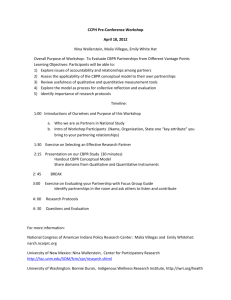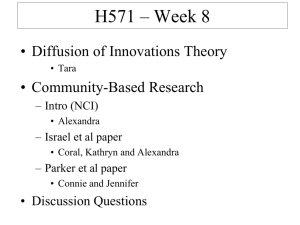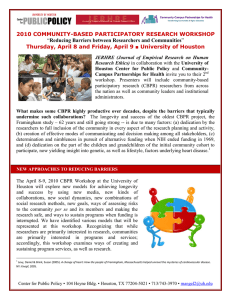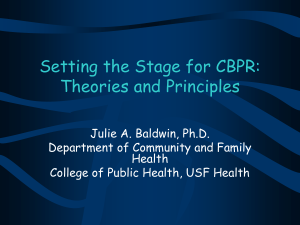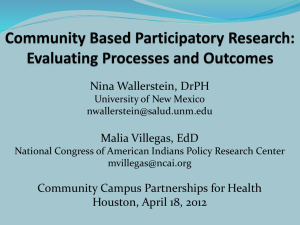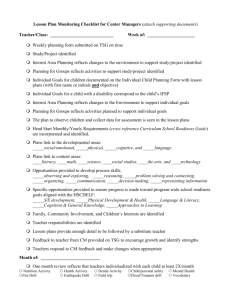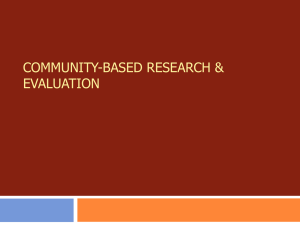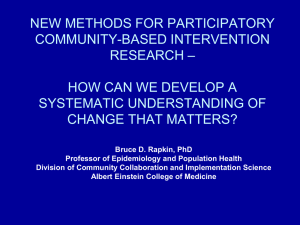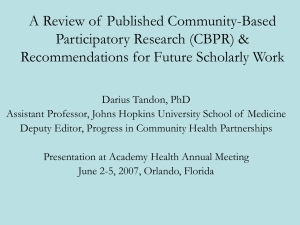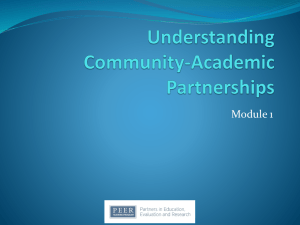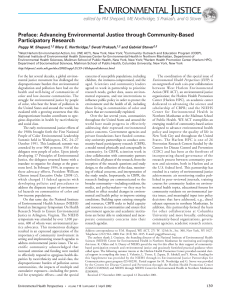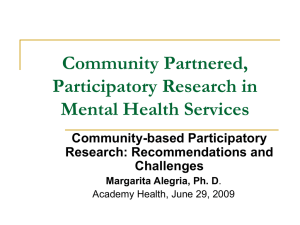CBPR Reviewer Checklist
advertisement
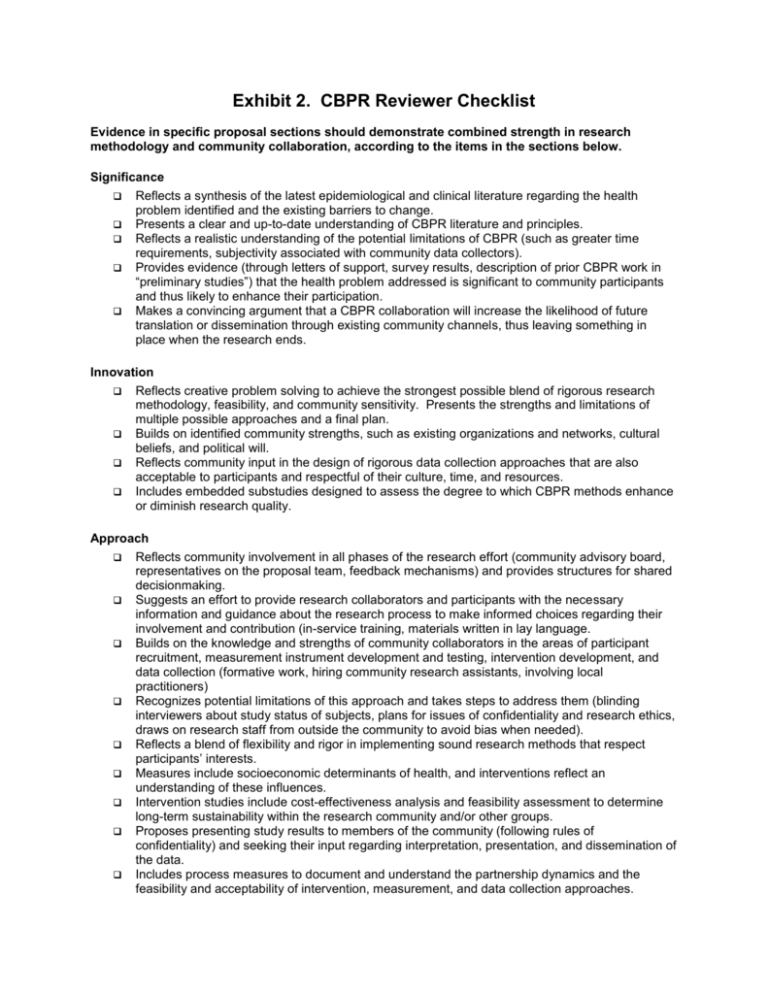
Exhibit 2. CBPR Reviewer Checklist Evidence in specific proposal sections should demonstrate combined strength in research methodology and community collaboration, according to the items in the sections below. Significance Reflects a synthesis of the latest epidemiological and clinical literature regarding the health problem identified and the existing barriers to change. Presents a clear and up-to-date understanding of CBPR literature and principles. Reflects a realistic understanding of the potential limitations of CBPR (such as greater time requirements, subjectivity associated with community data collectors). Provides evidence (through letters of support, survey results, description of prior CBPR work in “preliminary studies”) that the health problem addressed is significant to community participants and thus likely to enhance their participation. Makes a convincing argument that a CBPR collaboration will increase the likelihood of future translation or dissemination through existing community channels, thus leaving something in place when the research ends. Innovation Reflects creative problem solving to achieve the strongest possible blend of rigorous research methodology, feasibility, and community sensitivity. Presents the strengths and limitations of multiple possible approaches and a final plan. Builds on identified community strengths, such as existing organizations and networks, cultural beliefs, and political will. Reflects community input in the design of rigorous data collection approaches that are also acceptable to participants and respectful of their culture, time, and resources. Includes embedded substudies designed to assess the degree to which CBPR methods enhance or diminish research quality. Approach Reflects community involvement in all phases of the research effort (community advisory board, representatives on the proposal team, feedback mechanisms) and provides structures for shared decisionmaking. Suggests an effort to provide research collaborators and participants with the necessary information and guidance about the research process to make informed choices regarding their involvement and contribution (in-service training, materials written in lay language. Builds on the knowledge and strengths of community collaborators in the areas of participant recruitment, measurement instrument development and testing, intervention development, and data collection (formative work, hiring community research assistants, involving local practitioners) Recognizes potential limitations of this approach and takes steps to address them (blinding interviewers about study status of subjects, plans for issues of confidentiality and research ethics, draws on research staff from outside the community to avoid bias when needed). Reflects a blend of flexibility and rigor in implementing sound research methods that respect participants’ interests. Measures include socioeconomic determinants of health, and interventions reflect an understanding of these influences. Intervention studies include cost-effectiveness analysis and feasibility assessment to determine long-term sustainability within the research community and/or other groups. Proposes presenting study results to members of the community (following rules of confidentiality) and seeking their input regarding interpretation, presentation, and dissemination of the data. Includes process measures to document and understand the partnership dynamics and the feasibility and acceptability of intervention, measurement, and data collection approaches. Exhibit 2. CBPR reviewer checklist (continued) Translation (when relevant) Describes mechanisms and approaches to building individual and community capacity that remains with the community after the researchers are gone and increases the likelihood of achieving health improvements as a result of the research (training, hiring for research jobs, leadership roles, presentation of findings, infrastructure building, proposal writing) Considers carefully the approach to dissemination of research findings while respecting confidentiality. Proposes sharing results with research participants and designing dissemination strategies involving community partners in the academic meetings, academics at community meetings, and print dissemination approaches for both academic and community-level distribution (newsletters, videos, lay publications, TV and radio). Includes plans to assess longer terms sustainability of interventions evaluated as part of the study Investigators Includes community members on the list of key personnel and provides biographical information about leaderships roles and responsibilities in the community. Ensures that biosketches of academic partners reflect prior collaborative research involvement with communities (beyond simply research “in” the community). Includes, in the preliminary studies section, relevant work of the academic as well as community partners. Environment Includes a section on the community “environment” in terms of individual and institutional support (availability of space and facilities for data collection including blood specimens, meeting rooms for interventions and community advisory board meetings). Describes the political environment as either a support or challenge related to sensitive research topics such as HIV-AIDS, smoking, or domestic violence. Indicates the degree to which resources obtained for the proposal would be used to enhance the research environment within the community if this is lacking (e.g., computers for data collection, refrigerator for blood specimens). Budget and Timeline Reflects the resources and time needed to develop or enhance community partnerships. Includes resources and a strong rationale for expenses related to recruitment, retention, and partnership building while respecting the cost of research to participants and community partners (food, travel, lodging, meeting room rental, office supplies for community-based research staff, reimbursement or incentives for lay health advisors). Includes and justifies the cost of training and materials to institutionalize interventions or initiate efforts by the community to address policy and environmental change as a result of research findings.
